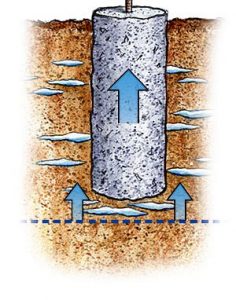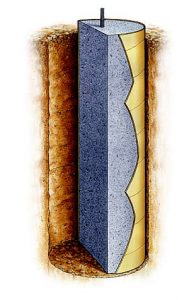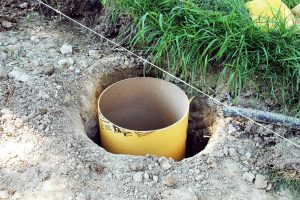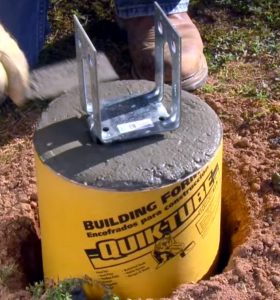
A deck is a great place to relax and enjoy time with family and friends.
Spring is approaching. We know this from the longer days, brighter sunlight and warmer weather. Spring fever gets a hold of us and we naturally start thinking about spending more time outdoors. If you’re considering installing a deck so that you can spend more time with your family in your garden then review these points for a successful project.
Part 1: Deck Foundation
Like a house your deck needs a solid foundation that won’t move over the course of its life and that will support the weight of people, pets, and furniture. The most common way to do this is to build the deck on concrete piers. Your contractor can help you balance cost an function in choosing the size of the piers. 10 inch, 12 inch, or 14 pinch piers all have their proper use depending on deck design, function, and soil conditions. Choosing a pier that’s too small will result in your deck sinking over time and choosing piers that are unnecessarily large is a waste of resources.
Also, the depth of the pier is vital to the life of your deck. Since everything is built on top of these, getting this part wrong will essentially mean demolishing and rebuilding your deck. In the Greater Toronto Area the recommended depth of deck piers is at least 4 feet in the ground. In Toronto the accepted frostline is 42 inches deep but if we have a particularly cold winter and your site is very moist your piers have heave upwards due to freezing and thawing. Digging to a depth of 4 feet gives you a little insurance against this. In areas north of Toronto where it gets a little colder in the winter it is absolutely essential to dig at least 48 inches.
Many contractors will install deck footing to a depth of 42 inches to save a little money, but don’t accept this. The risk of frost heave is too great for the amount of money you save. Ask for footings to be installed 48 inches deep, make sure they add the depth of the footings in the contract, and ask them to show you the depth of the holes before pouring the concrete. An ounce of prevention is definitely worth a pound of cure here.

Footing depth too shallow: the layers of frost below the footing will repeatedly heave the footing upward after each freeze thaw cycle and cause the deck to shift vertically.

Footing irregularities: frost will “catch” the protrusions in the surface and heave the footing upward throwing the deck out of balance.

A perfectly smooth footing will eliminate shifting or cracking and properly support the weight of the deck for a lifetime.
One more thing you should insist on is the use of form tubes, commonly known by the brand names: Builders Tubes and SonoTubes. There are two good reason for this. First, by using the tubes the concrete will cure smooth on the sides so that any frost that comes in contact with the piers below the soil surface won’t have any irregularities to “catch” on and lift the pier. Second, the tubes will act as a break between the ground and the footings minimizing the friction between frost and your footings.

Builders Tube inserted into hole prior to pouring concrete.

A well built deck footing will support your deck for a lifetime.
If you take these points into consideration when building your deck you will end up with a foundation that will last a lifetime. In part two of this article we’ll look at what you need to consider for the frame of your deck. Read part 2 to get a better understanding of deck framing construction.

